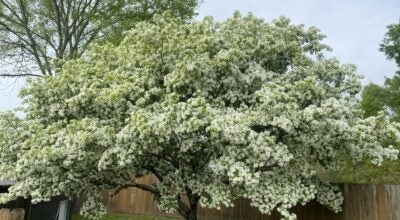Exploring the History of Tung Trees in Washington Parish and St. Tammany
Published 5:00 am Monday, December 4, 2023

- Mary Helen Ferguson
|
Getting your Trinity Audio player ready...
|
By Mary Helen Ferguson
Columnist
I grew up hearing about tung trees. Particularly, I learned that much of the land in St. Tammany Parish on which Money Hill golf community and the Whippoorwill Grove subdivision now exist was once planted in tung trees.
The tung oil tree (Vernicia fordii, formerly Aleurites fordii) is native to parts of China and southeast Asia. Oil from tung seeds has been used in varnishes, paints, and other products.
Tung tree cultivation took off in southeastern Louisiana and south Mississippi in the 1930s, as trees were planted on land where pine trees had once grown. By 1950, approximately 874 Louisiana farms grew them. A number of tung-related companies existed in the Florida Parishes and New Orleans. Washington Parish had several mills for processing tung fruit. (I’m using the term “fruit” in the botanical sense. It definitely should not be eaten.)
The Bogalusa Post Office once housed the US Department of Agriculture’s (USDA) US Field Laboratory for Tung Investigations, and both USDA and Mississippi State University had tung research facilities in Pearl River County, MS.
Tung cultivation in southeastern Louisiana continued through the 1960s. Hurricane Camille, in 1969, was a final straw for the local tung industry, though it was already in decline due to factors such as synthetic substitutes, other plant-derived oils, imported tung oil, and the tree’s susceptibility to late freezes that sometimes killed flowers and prevented seed production.
Now, tung oil trees can be seen in the edges of the woods along Louisiana Highway 21, between Covington and Bush, and along Louisiana Highway 16, between Amite and Franklinton. Their white flowers stand out in late winter and early spring. People may also notice them in the fall, when their leaves are more yellow than those of many trees around them.
Tung flowers are white to pale pink with reddish coloration near the center of the flower. They typically have five petals and remind me a bit of plumeria or frangipani flowers. Fruits contain three to five seeds. Leaves are heart-shaped and sometimes have three lobes. A feature that can help people distinguish between tung oil trees and ones that look similar is the presence of two red glands where the leaf blade meets the petiole (leaf stem).
Despite having ornamental qualities, tung oil trees are not the best choice for all locations. Fallen fruits may be annoying in landscapes. Trees spread by seeds and suckers and are considered invasive by some. Moreover, all parts of the plant including the seeds, which have occasionally been confused with edible nuts, are poisonous to humans and animals. Also, contact between leaves and skin can result in a rash.
In 2014, researchers from the USDA Agricultural Research Service Thad Cochran Southern Horticultural Laboratory in Poplarville, MS, released a tung tree cultivar named ‘Anna Bella’ for ornamental use. It produces few if any fruits and no viable seed, so spread by seedlings isn’t a problem. However, this variety does not appear to be readily available for purchase in the nursery industry.
Let me know if you have questions.
Dr. Mary Helen Ferguson is an Extension Agent with the LSU AgCenter, with horticulture responsibilities in Washington and Tangipahoa Parishes. Contact Mary Helen at mhferguson@agcenter.lsu.edu or 985-277-1850 (Hammond) or 985-839-7855 (Franklinton).





